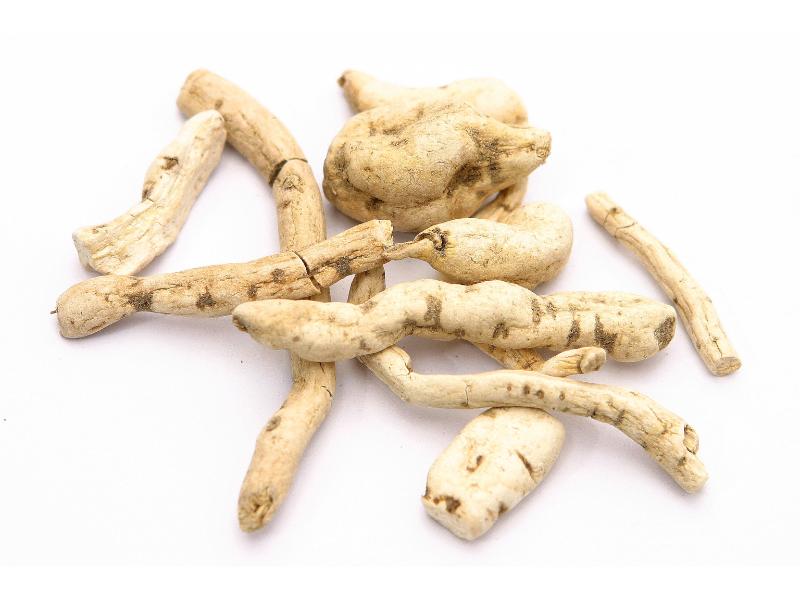Search in medicinals
Kansui Radix
Kansui [root]
甘遂 〔甘遂〕 gān suì

Alternate Chinese names: 苦泽 kǔ zé; 陵藁 líng gǎo; 甘藁 gān gǎo; 鬼丑 guǐ chǒu; 陵泽 líng zé; 肿手花根 zhǒng shǒu huā gēn; 甘泽 gān zé
Kingdom: Plant
Origin in PRC Pharmacopoeia: Euphorbia kansui T.N. Liou ex T.P. Wang. (PRC Pharmacopoeia)
Origin in unofficial sources: Euphorbia kansui T.N. Liou ex T.P. Wang*
Use: Medicinal
Category: Draining-precipitation agents / Drastic water-expelling agents
Properties: Bitter, sweet; cold; toxic.
Channel entry: Lung, kidney, and large intestine channels.
Actions and indications:
- Drains water and expels rheum: Water swelling; drum distension; rheum collecting in the chest and rib-sides.
- Disperses swelling and binds: Toxin swelling of welling-abscesses and
sore s. - Additional uses: Gān suì is used for patterns of wind-phlegm epilepsy because it has an action of expelling phlegm-drool. It is traditionally combined with roasted pig’s heart (zhū xīn, Suis Cor) and Zhū shā (朱砂 Cinnabaris , cinnabar) for this.
- Modern applications: In recent years, gān suì has been used to treat ascites in advanced-stage fluke (schistosomiasis) disease.
Dosage and method: Oral: 0.5–1gr, taken only in pills or powders. It should be processed with vinegar to reduce its toxicity for internal use, but it may be used raw externally.
Warnings: Contraindicated in pregnancy and weak health. It clashes with gān cǎo (Glycyrrhizae Radix). Gān suì can produce severe side effects such as nausea and vomiting, abdominal pain, dizziness, heart palpitation, a drop in blood pressure, lumbar pain, and bloody urine.
Product description: The root is composed of a series of globular, spindle-shaped, or oval sections 3–9 cm long and 0.6–1.5 cm in diameter. It has fibrous roots that have usually been removed. The skin is pale brown. Cut into transverse or oblique slices, the white, farinaceous flesh is revealed.
Quality: Dry fat farinaceous roots are the best.
Production area: Shǎnxī (Shaanxi), Hénán.
Etymology: Gān suì 甘遂 means sweet success(ion).
The character 遂 means to fulfil, follow, succeed, and here possibly refers to the succession of globular root sections. The presence of 甘, sweet, in the name of a bitter agent is obscure.